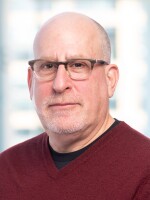MARY LOUISE KELLY, HOST:
A gene-editing technique called CRISPR has started to revolutionize medicine. But for people born with one of thousands of very rare genetic disorders, the era of CRISPR is bittersweet. That is because their disorders are too rare to attract drug companies to develop a CRISPR cure for them. NPR health correspondent, Rob Stein, has the story of some researchers trying to change that.
ROB STEIN, BYLINE: Lucy Landman was born with a very rare genetic disorder. It causes severe intellectual disability, weak muscles, often seizures, sometimes autism. Lucy's now three. Her mom's name is Geri.
GERI LANDMAN: She's expected to, you know, very much never be able to live independently, likely never be potty trained, likely never speak. Lucy walks like she's drunk most of the time. It's hard to watch your child suffer. And Lucy does, some days, suffer a lot.
STEIN: There's only a handful of kids in the world with Lucy's disorder. It's called PGAP3-CDG. And currently, there's no way to treat it. In principle, CRISPR, which enables scientists to easily make very precise changes in genes, could be a godsend for Lucy. CRISPR can edit the pairs of genetic letters or bases that make up DNA.
LANDMAN: We're lucky that both of her mutations - the one that she gets from me and the one that she gets from my husband - are what we call base editable, right? You can use CRISPR to kind of cut out the wrong base pair and put back in the right one - and that we live in 2024 when that's a legitimate possibility.
STEIN: But Landman, who is also a pediatrician who lives outside San Francisco, says the disorder affects too few people to attract the millions of dollars necessary to find out.
LANDMAN: When Lucy was diagnosed, I asked a bunch of my kind of basic science friends - you know, who work at Genentech and all these other big companies in the Bay Area. And I said, who's kind of working on - like, can't we just CRISPR this? This seems like it's so feasible. And they were like, I don't know of anyone - anyone at all. It's, like, no one's working on this yet, Geri.
STEIN: But then one day, Landman bumped into a guy at a farmers' market where she was trying to raise money for a foundation she started to try to change that. His name was Fyodor Urnov. Urnov works at the University of California, Berkeley, with Jennifer Doudna, who shared a Nobel prize for helping discover CRISPR. Urnov knows CRISPR is already changing the lives of some patients with genetic disorders, but he's trying to help kids suffering from much rarer conditions.
FYODOR URNOV: The for-profit sector is focusing on conditions such as sickle-cell disease, such as cancer, which are commercially viable because there's just enough people with them. And that leaves, frankly, you know, 99.5% of folks outside of the big building that says come here, be healed by CRISPR, because the commercial viability is not there, even though the technical feasibility is right in our hands.
STEIN: So Urnov and scientists at other universities are trying to develop a kind of template for groups of rare conditions that are similar enough that a CRISPR treatment for one could easily be adapted for others.
URNOV: We're building a set of recipes and approaches for how to switch from one disease to another and not take four years and 10 million to do that.
STEIN: The approach from one patient to the next would be essentially identical except for the very specific genetic letters that are edited, so each case wouldn't necessarily have to go through a long, expensive approval process at the Food and Drug Administration.
URNOV: The central idea is that cookbook will have been reviewed by the Food and Drug Administration. And so you can come to them, whether you are at UCLA, Seattle Children, and then say, FDA, we have a severely ill child with four months to live. Here's the cookbook for how to make the CRISPR on demand. We'd like to use that cookbook. And the goal is for the FDA or any other regulatory agency to say, yes, we understand. Please proceed. That's the goal.
STEIN: Dr. Peter Marks, who regulates gene editing at the FDA, says it would be like approving a new shaving razor.
PETER MARKS: CRISPR is very much like a razor blade handle and a razor. Much of CRISPR - the razor blade handle part - is going to be the same over and over again. And so we just need to focus on the razor blade portion, which could be different and yet fit on that same razor.
STEIN: Urnov has already started editing some of Lucy Landman's cells in his lab to show that CRISPR could help her and other kids with similar mutations. Lucy's mom is hopeful that maybe, someday, that could help her daughter.
LANDMAN: And the question is, if we do that at age 3 or age 5 or age 7, can we cure some of the other features of her disease, you know? Does she cognitively improve? Does she learn to speak in that way? That's certainly the hope.
STEIN: For Lucy and millions of children around the world suffering from very rare genetic disorders.
Rob Stein, NPR News. Transcript provided by NPR, Copyright NPR.
NPR transcripts are created on a rush deadline by an NPR contractor. This text may not be in its final form and may be updated or revised in the future. Accuracy and availability may vary. The authoritative record of NPR’s programming is the audio record.




